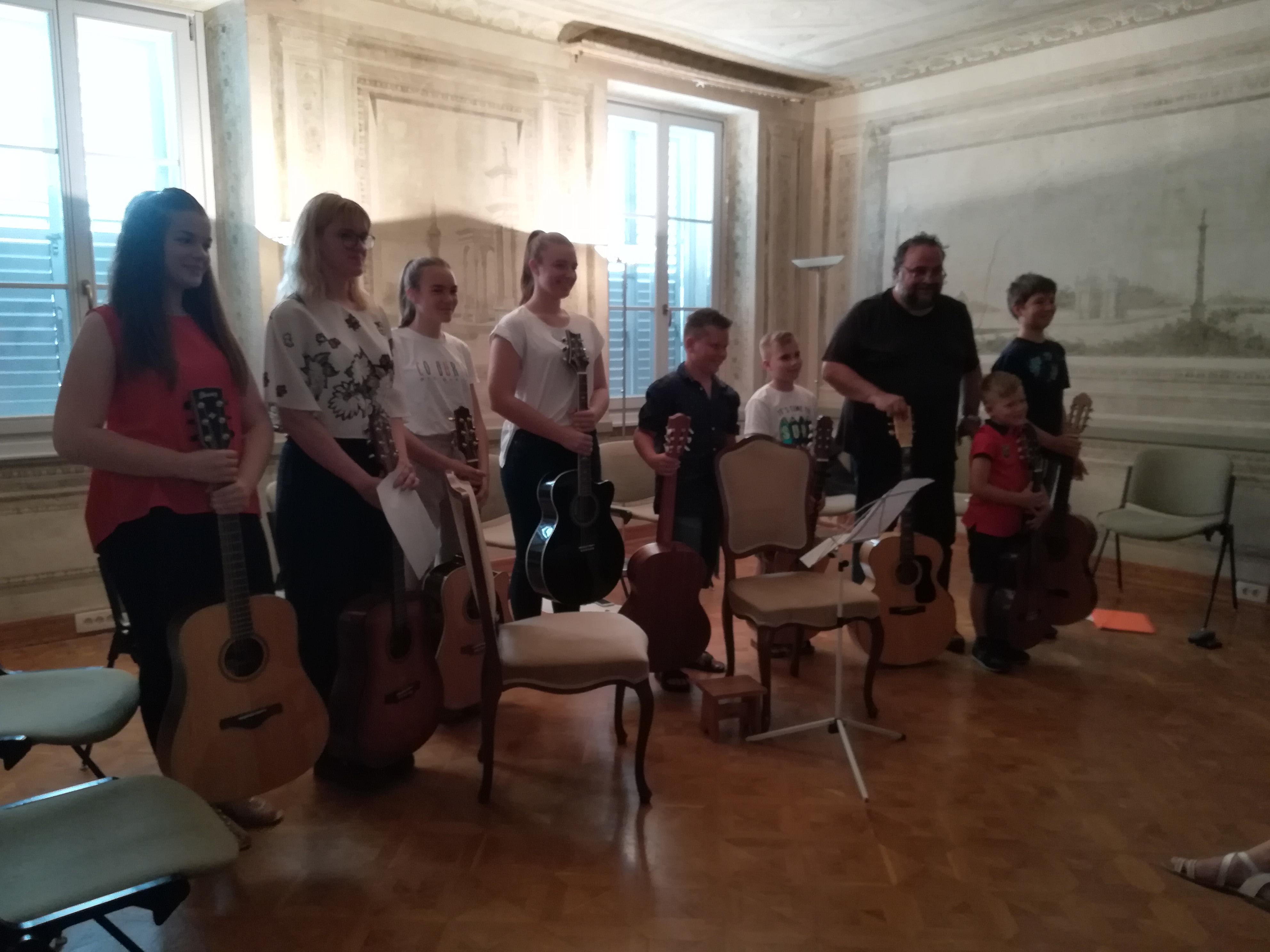Inaugurata la mostra del pittore Ireneo Ravalico

Saggio di chitarra dei giovani allievi
06/11/2019
Il gruppo Al tempo di Tartini ospite di TV SLO 1
06/16/2019
Una persona umile e riservata, profondamente religiosa e attaccata alla famiglia. È così che possiamo immaginare la figura del pittore triestino di origini piranesi, Ireneo Ravalico, come ci è stato raccontato dai figli presenti all’inaugurazione della mostra ieri, martedì 11 giugno in Casa Tartini. Dopo gli indirizzi di saluto da parte della Presidente della Comunità degli Italiani “Giuseppe Tartini” nonché Vicesindaco del Comune di Pirano, Manuela Rojec, del Presidente della Comunità Autogestita della Nazionalità Italiana di Pirano, Andrea Bartole, si è entrati nel vivo della mostra con il discorso di Kristjan Knez, Presidente del Centro Carlo Combi di Capodistria e Vicepresidente della Comunità degli Italiani “Giuseppe Tartini”, che ha parlato del periodo storico in cui ha operato il pittore. Fabrizio Stefanini, ex professore di Lettere di Trieste, ha invece proposto al pubblico una sua lettura critica delle opere di Ravalico.
Ireneo Ravalico (1922-2014) fu il penultimo figlio di una numerosa famiglia di origini piranesi trasferitasi presto a Trieste per ragioni economiche. L’attaccamento alla madre e una religiosità fortemente sentita sono due tratti che caratterizzano la personalità del giovane pittore. Sarà ammesso all’Accademia di Belle Arti di Venezia conseguendo un diploma che lo abiliterà a insegnare nella scuola.
Il ciclo scelto da esporre a Pirano riguarda soprattutto opere che ritraggono barche e il mare, due dei soggetti preferiti di Ravalico. Ma nei racconti dei figli, l’appartamento e lo studio del pittore conservavano tantissime tele e disegni di cui loro stessi non sapevano l’esistenza. Una vita passata a dipingere, la grande vocazione di un uomo che ha vissuto periodi difficili come quello del secondo conflitto mondiale e del dopoguerra.
La mostra rimane aperta al pubblico fino al 31 luglio, da lunedì a venerdì, dalle 9-13 e/o su richiesta.
Le foto di Nataša Fajon.
***
Skromen, zadržan, globoko veren in družinski človek. Tako sta tržaškega slikarja piranskih korenin, Irenea Ravalica, opisala njegova otroka, sin in hči, ki sta se udeležila odprtja razstave v Tartinijevi hiši.
Po pozdravnih nagovorih Manuele Rojec, predsednice Skupnosti Italijanov Giuseppe Tartini Piran in podžupanje Občine Piran, in Andree Bartola, predsednika Samoupravne skupnosti italijanske narodnosti Piran, smo prisluhnili Kristjanu Knezu, predsedniku Kulturnega središča Carlo Combi iz Kopra in podpredsedniku piranske skupnosti Giuseppe Tartini, ki je podal zgodovinski okvir slikarjevega ustvarjanja, za njim pa je Fabrizio Stefanini, nekdanji profesor jezikoslovja iz Trsta, z občinstvom delil svoj pogled na Ravalicova dela.
Ireneo Ravalico (1922-2014) se je rodil kot predzadnji otrok v številni piranski družini, ki pa se je zaradi ekonomskih razlogov kmalu preselila v Trst. Osrednji osebnostni lastnosti mladega slikarja sta bili navezanost na mater in globoka vera. Obiskoval je beneško akademijo za likovno umetnost in oblikovanje in po diplomi začel s poučevanjem na šoli.
Na razstavi v Piranu so na ogled dela, na katerih prevladujejo barke in morje, motiva, ki sta imela pri Ravalicovem ustvarjanju poseben prostor. A kot sta povedala njegova otroka, sta v slikarjevem stanovanju in ateljeju našla še veliko slik in risb, o čigar obstoju nista vedela ničesar. Življenje, posvečeno slikanju. Veliko poslanstvo človeka, ki je preživel težki obdobji druge svetovne vojne in povojnega časa.
Razstava bo na ogled do 31. julija, obiščete jo lahko od ponedeljka do petka, med 9. in 13. uro ali po predhodnem dogovoru.




